Ετικέτες
- -Παράδοση (140)
- Αμερική-Η.Π.Α (148)
- Αμερική-Η.Π.Α. (2675)
- Ανταρκτική (7)
- Άρης (15)
- Ασία-Μ.Ανατολή (2763)
- Αστρονομία- Επιστήμη (895)
- Αυστραλία (82)
- Αφρικη (307)
- Αφρική (199)
- Αφροδίτη (3)
- Διεθνή (6429)
- Εναλλακτική Ιστορία (274)
- Εξ. Πολιτική (Αρχές) (152)
- Επιστήμη-Διάστημα (170)
- Εσωτερική πολιτική (3342)
- Ευρώπη (7882)
- Ζητήματα Ελληνισμού (12750)
- Ζητήματα Στρατηγικής (3077)
- Ζητήματα Στρατηγικής Μονάδες (2)
- Ζητήματα Στρατηφικής (365)
- Ζωικό Βασίλειο (102)
- Θρησκευτικά Ζητημάτα (1706)
- Ιατρικά (384)
- Ιστορία-Μέθοδολογία (278)
- Ιστορικά (9668)
- Κοινωνία (3026)
- Κουρδικό (301)
- Κρόνος (1)
- Κύπρος (743)
- Μαγειρική (123)
- Μεθοδολογία (33)
- Μονάδες (3570)
- Οικονομία (2581)
- Οπλικά συστήματα (1523)
- Οχήματα (270)
- Παιδεία (540)
- Περιβάλλον (122)
- Πλούτωνας (5)
- Πολιτισμός (1389)
- Ρομαντισμός (220)
- Σελήνη (6)
- ση (2)
- Σημαντική Ανάρτη (2)
- Σημαντική Ανάρτηση (199)
- Συγκριτική Ιστορική Ανάλυση (772)
- Τέχνη (1)
- Τεχνολογία (2)
- Τουρκία (2462)
- Τρομοκρατία (760)
- Φιλοσοφία (336)
- Χ.Α. (748)
- ΧΑ (1)
Κυριακή 13 Νοεμβρίου 2016
Σάββατο 12 Νοεμβρίου 2016
Wars of Religion
Detail of a Hadith referring to the succession of the Twelve Imams, at the shrine of Sayyida Ruqayya, Damascus; from People of the Prophet’s House edited by Fahmida Suleman (275pp. Azimuth. £35. 978 1 898592 32 7)
THOMAS SMALL
This piece forms part of a TLS Special Feature, our primer on the complex politics and religions of the Middle East
A hadith (or saying of the Prophet Muhammad)
considered sound by all major authorities and widely circulated among
Sunni Islamists states that the history of the umma will go
through five phases: first, the Prophet himself will rule over it and
teach it the right way to live; then will come the time of caliphate,
when caliphs will rule according to the Prophet’s teachings; then the
time of benign kingship obtained by force, followed by the time of
oppressive kingship; finally, the time of caliphate will rise again,
where a caliph will rule once more in accordance with the Prophet’s
teachings, and usher in the end of the world.
From this eschatological perspective, Ataturk’s abolition of the
Ottoman Caliphate in 1923 marked the end of the third of those five
phases, the phase of benign kingship. Since then, the Islamic world has
been suffering the injustice of oppressive kingship, whether at the
hands of brutal dictators or morally bankrupt monarchs. And though
jihadist groups differ over the best way to achieve it, they are united
by an ultimate aim, which they share, broadly speaking, with all forms
of Islamism: the restoration of the Caliphate as a necessary step along
the way to the Last Judgement.Παρασκευή 11 Νοεμβρίου 2016
Struggling with reality | On reading Mein Kampf
ANSON RABINBACH
On
October 29, 1945, the Allied Control Council in Germany issued a decree
dissolving the organizations of the National Socialist Party including
its leading press agency and publishing house, the Franz Eher Nachfolger
GmbH. Since the headquarters of the firm was in Munich, the property of
the Eher Verlag was transferred to the Free State of Bavaria, which
also assumed legal succession and trusteeship of its assets. A
provisional court in Munich (Spruchkammer) initiated criminal
proceedings against Max Amann, who had amassed a considerable fortune as
the head of Nazi Germany’s largest publishing enterprise, sentencing
him to ten years imprisonment. In 1948, all copyrights were transferred
to the Bavarian State Ministry of Finance, including the copyright to Mein Kampf,
which belonged to the literary estate of Adolf Hitler. Since German
copyright law stipulates that all rights revert to the public domain
seventy years after the death of the author, the copyright to Mein Kampf expired on December 31, 2015. Mein Kampf
was never actually banned in the Federal Republic of Germany; it was
sold in second-hand bookshops, was obtainable in libraries, and in
recent years has been readily available on the internet. Only the
publication of the book was proscribed.
Πέμπτη 10 Νοεμβρίου 2016
Graf Zeppelin: Diving at the unique WW2 German aircraft carrier (photos and videos)
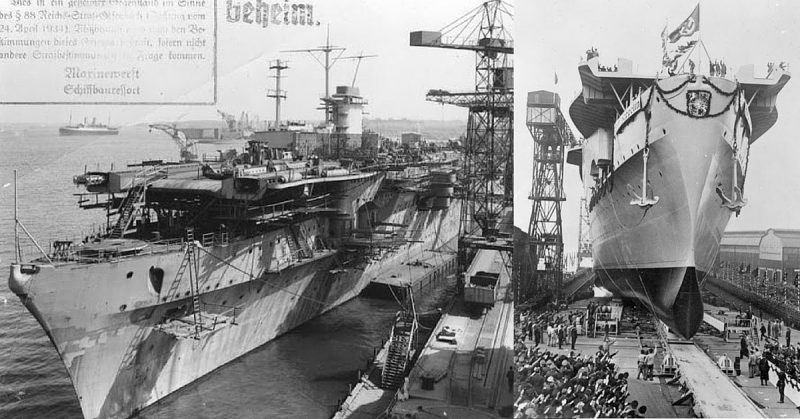
Graf Zeppelin (Flugzeugträger A, Aircraft Carrier A) was the only aircraft carrier launched by Germany during World War II. It represented part of the Kriegsmarine’s attempt to create a well-balanced oceangoing fleet, capable of projecting German naval power far beyond the narrow confines of the Baltic and North Seas.
A diving team from Poland, including experienced scuba divers Dimitris “Dima” Stavrakakis and acclaimed underwater photographer Tomasz “Tomek” Stachura share with pierrekosmidis.blogspot.com their experience and stunning underwater photos of a unique WW2 Wreck, the only German aircraft carrier that was never meant to see active duty.
Stavrakakis says:
“The diving expedition was well prepared and planned, since we were the first scuba divers to visit the shipwreck, with special permission from the authorities.
“We had two doctors and a hyberbaric chamber on board, because of the demanding nature of those dives at depths ranging from 75 to 95 metres.
By Pierre Kosmidis / pierrekosmidis.blogspot.gr
Τετάρτη 9 Νοεμβρίου 2016
WWII Super Submarine discovered off the coast of Hawaii
A
Second World War mega-submarine of Imperial Japanese Army had been
successfully mapped and filmed, a year and half after it was first
discovered off the coast of Hawaii.
Decades ahead of its time, the I-400 submarine was among the largest and technologically most advanced submarines of its era. The aircraft hangar of the submarine was large enough to facilitate the launch of at least three float-plane bombers.
Decades ahead of its time, the I-400 submarine was among the largest and technologically most advanced submarines of its era. The aircraft hangar of the submarine was large enough to facilitate the launch of at least three float-plane bombers.
Τρίτη 8 Νοεμβρίου 2016
China's Race To Space Domination
To gain an edge here on Earth, China is pushing ahead in space
By Clay Dillow, Jeffrey Lin, and P.W. Singer
September 20, 2016
Before
this decade is out, humanity will go where it’s never gone before: the
far side of the moon. This dark side—forever facing away from us—has
long been a mystery. No human-made object has ever touched its surface.
The mission will be a marvel of engineering. It will involve a rocket
that weighs hundreds of tons (traveling almost 250,000 miles), a robot
lander, and an unmanned lunar rover that will use sensors, cameras, and
an infrared spectrometer to uncover billion-year-old secrets from the
soil. The mission also might scout the moon’s supply of helium-3—a
promising material for fusion energy. And the nation planting its starry
flag on this historic trip will be the People’s Republic of China.
After years of investment and strategy, China is well on its way to becoming a space superpower—and maybe even a dominant one. The Chang’e 4 lunar mission is just one example of its scope and ambition for turning space into an important civilian and military domain. Now, satellites guide Chinese aircraft, missiles, and drones, while watching over crop yields and foreign military bases. The growing number of missions involving Chinese rockets and taikonauts are a source of immense national pride.
“China sees space capability as an indication of global-leadership status,” says John Logsdon, founder of the Space Policy Institute at George Washington University. “It gives China legitimacy in an area that is associated with great power.”
After years of investment and strategy, China is well on its way to becoming a space superpower—and maybe even a dominant one. The Chang’e 4 lunar mission is just one example of its scope and ambition for turning space into an important civilian and military domain. Now, satellites guide Chinese aircraft, missiles, and drones, while watching over crop yields and foreign military bases. The growing number of missions involving Chinese rockets and taikonauts are a source of immense national pride.
“China sees space capability as an indication of global-leadership status,” says John Logsdon, founder of the Space Policy Institute at George Washington University. “It gives China legitimacy in an area that is associated with great power.”
Δευτέρα 7 Νοεμβρίου 2016
The cutting edge U-boat that sunk in 1945 was raised in 1957 & returned to service – today you can go aboard yourself
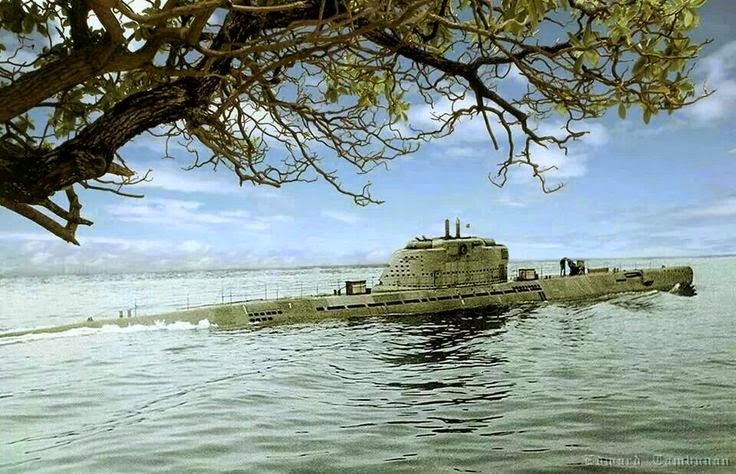
| SHARE:FacebookTwitter |
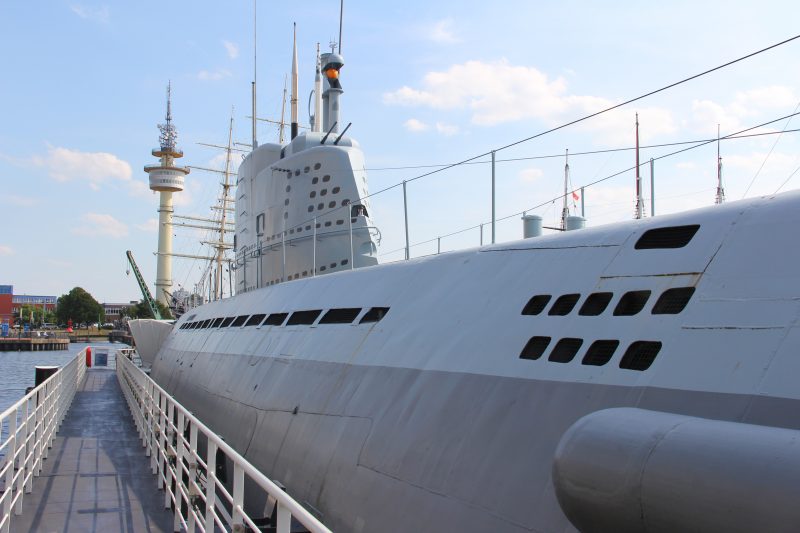
In 1957, she was raised and returned to service on 1st September 1960 as the research submarine Wilhelm Bauer. She served in a civilian role under various research projects before decommissioning on 15th March 1982. On 24th April 1984, she was transferred to the Deutsches Schiffahrtsmuseum (German Maritime Museum) as the Technikmuseum Wilhelm Bauer.

Κυριακή 6 Νοεμβρίου 2016
The History of Armored Trains And Why They Are Now A Thing Of The Past
by Nikola Budanovic

The beasts of the railroads began their epic service in the American Civil War when a single car was built to defend the Philadelphia, Wilmington and Baltimore Railroad. Then war trains saw action in the Franco-Prussian War of 1870, and the First and the Second Boer Wars which led the machines into the 20th century.

Trains were seen as transport mainly at the time, as they were capable of carrying a large number of people and equipment in a short period of time. Its transport use revolutionized the way battlefield logistics were executed at the time. The fact that the machine was tied to the tracks didn’t represent such a disadvantage, for this was the only dawn of the automobile age and the four-wheelers were still lagging behind the locomotive.
Needless to say, tanks were only in development during the First World War, so flawed designs often lost sympathy in the military, and trains proved to be more reliable. Mounted with cannons and encased with thick armor, the trains were fearsome fighting machines.
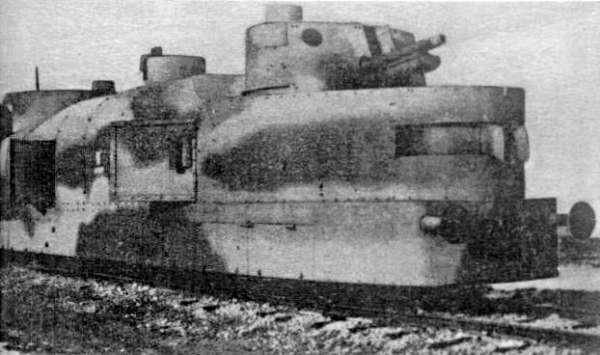
In Poland, trains were active in the defense effort of the September campaign against the invading Germans. The Germans, on the other hand, developed super cannons on a train chassis, most famous being the Schwerer Gustav, which saw limited service, but had a devastating effect during the siege of Sevastopol.
Apart from official military use, trains often served as support for partisan groups which staged massive offensives during the last years of the Second World War. Such was the case in Slovakia, where three armored trains ― The Hurban, Štefánik, and Masaryk ― delivered a decisive blow to the weakened German units in September of 1944.
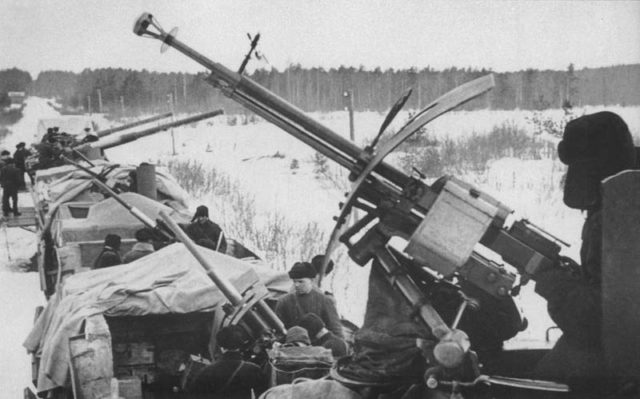
In addition to that, the railways were more and more subjected to acts of sabotage by commando or partisan units, which slowed the advance of the trains significantly. The mere fact that it relied on the use of tracks turned these war machines into vulnerable giants.
Nevertheless, trains continued to serve in battle even after WWII (but far less actively), most notably in Indochina.
But in the countries of the Eastern Bloc, the use of trains as means of battle was nurtured as a tradition. Even though it was old-fashioned in a way, it was still suitable for serving as a mobile intercontinental ballistic missile (ICBM) launching ramp. In the late stages of the Cold War, the RT-23 Molodets, an intercontinental ballistic missile, entered service in the Soviet Union during the Cold War.
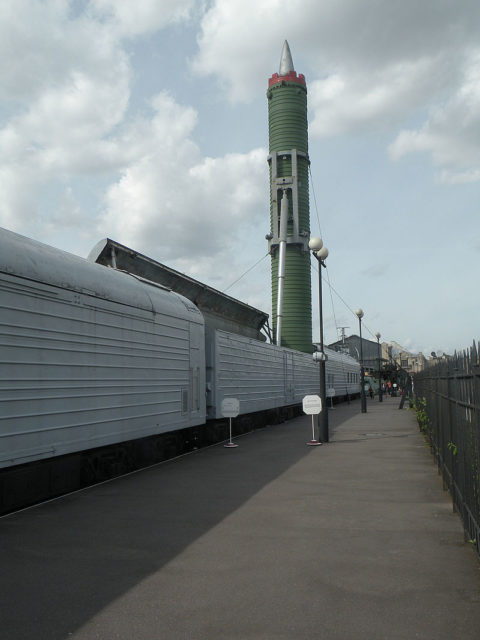
Every train included ten main battle tanks, two light amphibious tanks, several AA guns, as well as several armored personnel carriers, supply vehicles and equipment for railway repairs. They were all mounted on open platforms or in special rail cars. Different parts of the train were protected with 5–20mm-thick armor.
So it is not surprising that some of the last known uses of armored trains happened during the conflicts following the collapse of the Soviet Union 1990s, most notably in the disputed area of Nagorno-Karabakh, between today’s Armenia and Azerbaijan.
Also, during the Yugoslav Wars from 1991 to 2001, some improvised armored trains were used by paramilitaries in the conflict in Croatia and Bosnia. These were regular passenger trains transformed into terrible land cruisers, capable of laying siege to towns and villages across the war-torn Bosnia.
The most infamous train that was in service during those years was the Krajina Ekspres, employed by the members of a Serbian paramilitary in Bosnia. The train took part in a three-year-long siege of the town of Bihac, which lasted from 1992 to 1995.
Even then the technology was considered to be obsolete, but in a conflict between various paramilitary and guerilla groups, such hardware proved to be intimidating. In late 2015, Pro-Russian militants in the Donbass region of Ukraine were pictured operating a homemade armored train.
One armored train that remains in regular use is that of Kim Il-sung and Kim Jong-il, which the former received as a gift from the Soviet Union and the latter used heavily for state visits to China and Russia as he had a fear of flying.
Σάββατο 5 Νοεμβρίου 2016
STUNNING Pics of Allied Planes Pressed Into Nazi Service
The Luftwaffe P-38 Lightning & Other
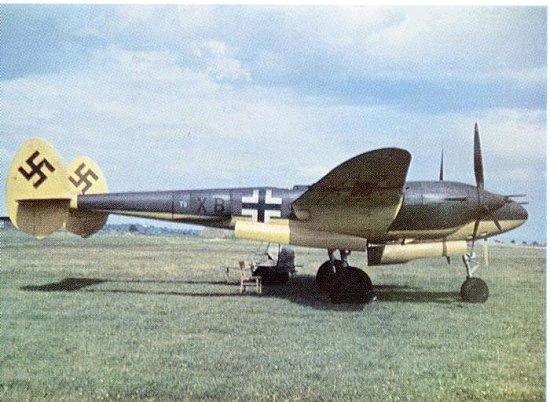
Enjoy these amazing pictures of familiar Allied airplanes in very unfamiliar colors and markings!
Παρασκευή 4 Νοεμβρίου 2016
2,000-year-old skeleton salvaged from Antikythera shipwreck may hint at earliest evidence of human DNA

Posted By: Dattatreya Mandal πο
The waters off the coast of Antikythera in Greece hold many
mysteries of the ancient world that are yet to be uncovered. Site of the
largest shipwreck from antiquity, the region boasts a treasure trove of
invaluable artifacts as well as the famous Antikythera Mechanism, a
2,000-year-old astronomical calculator that is widely considered the
world’s oldest computer. Recently, researchers working at the site have
discovered a well-preserved skeleton of a young man, which they believe
could provide the earliest DNA evidence ever retrieved from a sunken
vessel.Πέμπτη 3 Νοεμβρίου 2016
Much More Than Code Talking – The Native Americans’ Role in World War II
Lincoln Riddle

From the time the Europeans began settling in the New World, the population of the Native Americans began decreasing at an alarmingly rapid rate. The group’s population was seeing a little bit of a rise during the beginning of the 21st century. However, another large chunk of this growing population would fall prey to another harsh crime of the Western world – World War II. In fact, 44,000 Native American individuals participated in the war.
Τετάρτη 2 Νοεμβρίου 2016
The Tortoise, An Unknown WW2 Heavy Tank – Video from The Tank Museum
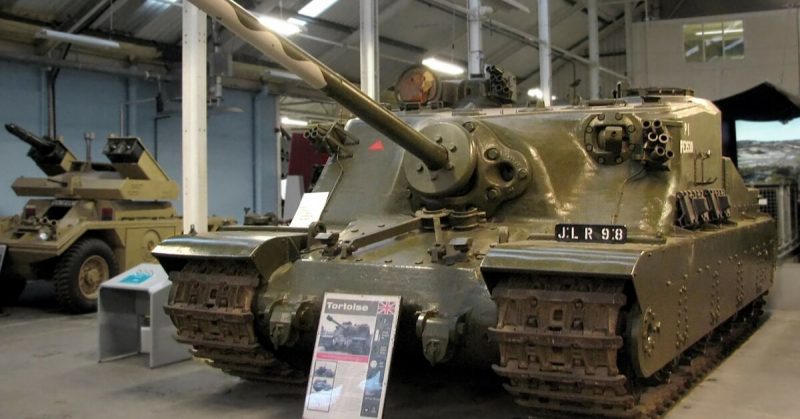
In the early part of 1943, the Allied forces anticipated considerable resistance in the projected future invasion of Europe, with the enemy fighting from heavily fortified positions such as the Siegfried Line. As a result, a new class of vehicles emerged, in the shape of Assault tanks, which placed maximum armour protection at a higher priority than mobility.
Τρίτη 1 Νοεμβρίου 2016
8 Nazi German Inventions The US Made Use of After WWII

Εγγραφή σε:
Σχόλια (Atom)




